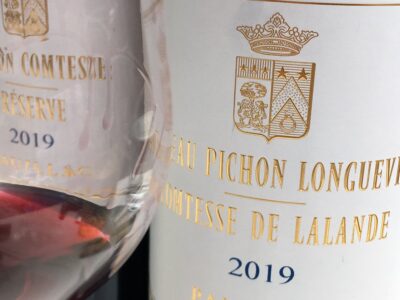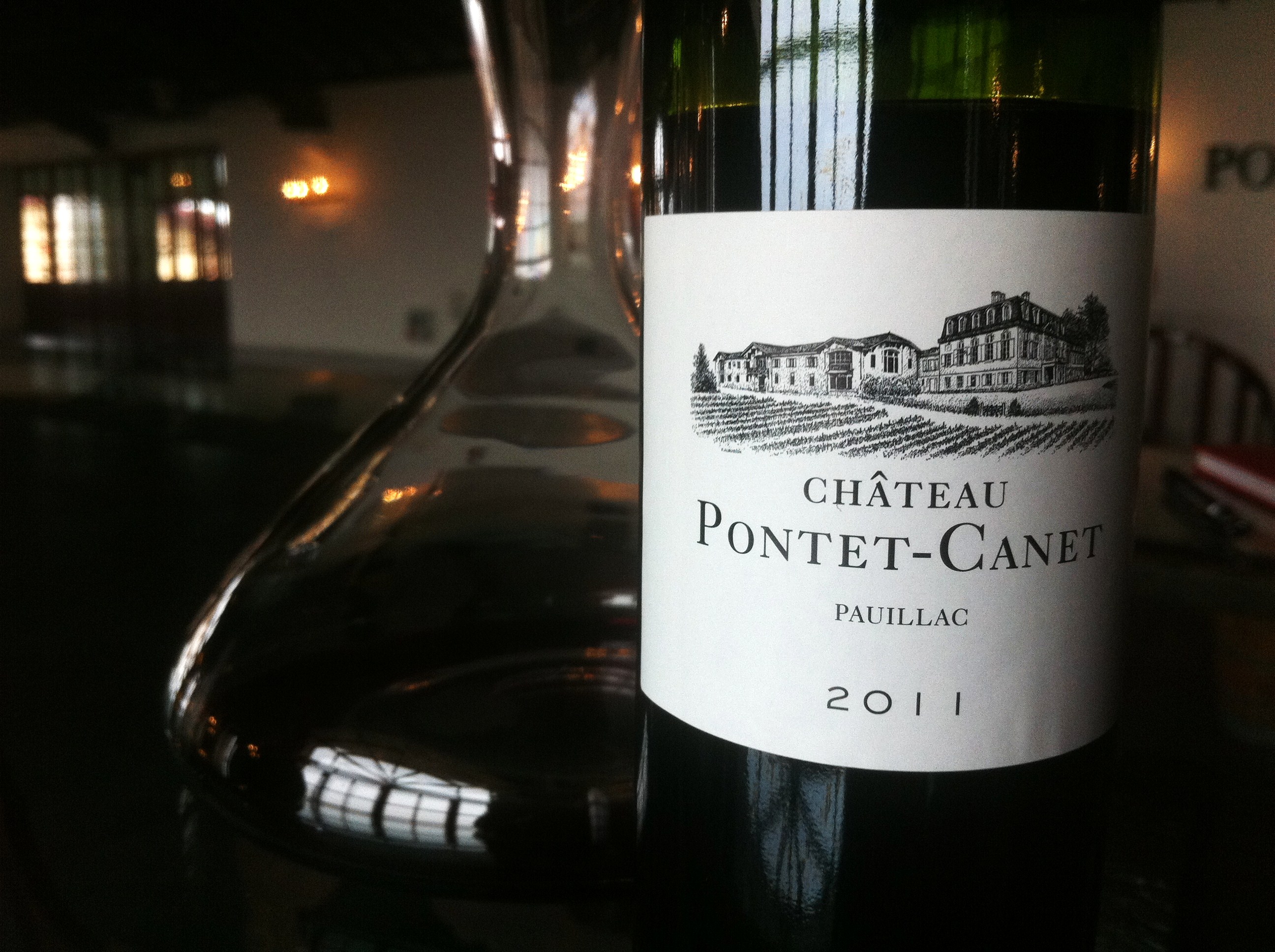Bordeaux 2019: Château Pichon Comtesse de Lalande
 Wow! Château Pichon Comtesse de Lalande is certainly one of the wines of 2019. It may very well become the wine of the vintage. The grand vin is extraordinarily compelling. It has fabulous levels of concentration and extract but isn’t the slightest bit heavy or overdone and tastes firmly of Pauillac. And while it weighs in at over 14%, it remains fresh and energetic. The tannins are suave and remarkably supple. Winemaker Nicolas Glumineau describes it as a ‘miracle’ wine. For him, his top benchmark previously was the 2010 vintage, but Glumineau feels he now has reached a new level in his own winemaking experience. “2019 is my personal benchmark now. Everything is in balance. There is great concentration but no heaviness. The juice was thick, full of flesh, but not in the bodybuilder sense, the fruit was fresh but not at all jammy.” If the grand vin is terrific Pauillac, Pichon Lalande’s ‘Reserve’ is also very impressive. It represents 50% of the overall crop at Pichon Lalande and was very competitively priced on release. Exciting wines here for sure. I’ll report later on Château de Pez, under the same ownership, in a later post on St Estèphe.
Wow! Château Pichon Comtesse de Lalande is certainly one of the wines of 2019. It may very well become the wine of the vintage. The grand vin is extraordinarily compelling. It has fabulous levels of concentration and extract but isn’t the slightest bit heavy or overdone and tastes firmly of Pauillac. And while it weighs in at over 14%, it remains fresh and energetic. The tannins are suave and remarkably supple. Winemaker Nicolas Glumineau describes it as a ‘miracle’ wine. For him, his top benchmark previously was the 2010 vintage, but Glumineau feels he now has reached a new level in his own winemaking experience. “2019 is my personal benchmark now. Everything is in balance. There is great concentration but no heaviness. The juice was thick, full of flesh, but not in the bodybuilder sense, the fruit was fresh but not at all jammy.” If the grand vin is terrific Pauillac, Pichon Lalande’s ‘Reserve’ is also very impressive. It represents 50% of the overall crop at Pichon Lalande and was very competitively priced on release. Exciting wines here for sure. I’ll report later on Château de Pez, under the same ownership, in a later post on St Estèphe.
What was so significant in a drought year like 2019 was the timing of the rain. While there was very little, at Château Pichon Lalande it arrived just when Glumineau wanted it. Usually, as a winegrower, rain is the last thing you are seeking out but it was just the opposite in the summer of 2019. “We were literally praying for rain in early July because of the drought and heat,” explains Glumineau. “Then in mid-July we got it, something like 32 mm in a couple of hours, exactly what we needed. I remember saying to my team then, now we need just the same in August. Again in mid-August we received 28 mm. It was just what we needed for the Cabs to help complete their ripening. We were very, very lucky.”
Glumineau knew he was on to something special when he first started fermenting. “Pauillac is Pauillac when you smell cigar box, blackcurrants and blueberries. Most of the time I’m looking for those flavours in Cabs but even the very young Merlot had that smell. That’s very unique. You could really smell in the cuverie that you were in Pauillac.” At Pichon Lalande there are no terroirs that are strictly set aside for the grand vin and those that make into the second wine [the reserve]. Every parcel has a shot. The initial blending is conducted blind and this year two young parcels, planted in 2011, made it into the grand vin this year because of their quality.
Talking vineyard, there has been an ambitious replanting scheme underway here since 2010, following a comprehensive soil analysis at the property. Currently only 73 hectares of the 90 available are in production. Each year, 3 hectares are taken out, let fallow for a period and then replanted. Moving forward the emphasis will be more on the Cabernets, partly for geological reasons, but also due to the influence of climate change, with the Cabernets responding better to heat and increased drought than Merlot. Viticulture follows sustainable practices and around 28 hectares are now farmed using biodynamic principles. The ratio between the grand vin and the reserve, currently around 50:50 will more likely shift to 66:33 in favour of the grand vin eventually.
In the past there was a sense that Pichon Lalande, as opposed to Pichon Baron, was more supple and verging more towards a St Julien styled wine [indeed some of the property’s vineyards lie in that appellation]. Glumineau dismisses this as marketing to a degree. When he arrived in 2013 the first thing he did was set about tasting all the back vintages of the estate to get a sense of the wine and its terroir [and partly to reboot his memory drives after being winemaker previously at Château Montrose]. The cellar master lined up every vintage from 1970 to 2010 and what struck Glumineau after six hours of tasting on his own was that it was the Pauillac Cabernet-styled vintages that most impressed, not those more St Julien styled ones. This has informed him in his approaches since.
Certainly the 2019 vintage here is pure Pauillac. There is plenty of ripe, pure blackcurrant fruit on display but the volume is turned up across the board. In the grand vin, Glumineau and his team surely have a ‘wine of the vintage’ in the making. For me it is a candidate for perfection.
The following notes were taken from full bottle samples air freighted to London back in June.
Pichon Comtesse Reserve, Pauillac, 2019
Deeply coloured; vibrant purple at edge; lovely sweet, ripe blackcurrant fruit; very open; some black cherry notes too; very juicy – bursting with fruit in fact; creamy qualities here too; purity comes across; beautiful; great entry; more lush blackcurrant fruits; freshness and a certain elegance and poise; real finesse; really polished on the palate; quite caressing; little oak on the finish; freshness again. On song on the day. Little more chew on the very finish but this is a very supple wine. Real twist of acidity at the end punctuates this. Later the aromatics really opened up – lovely sweet ripe blackcurrant tones alongside black cherry and kirsch notes. This is really substantial, layered and with a wonderful texture. [51% Cabernet Sauvignon, 46% Merlot, 3% Cabernet Franc, 14.4% alc, pH 3.7, press wine 10% Yield 42 hl/ha, 40% new oak for 12 months]. Tasted June 2020. Drink 2024-2038. 93-94+.
Château Pichon Longueville Comtesse de Lalande, Grand Cru Classé, Pauillac 2019
Deeply coloured; vibrant purple at edge; cassis; fresh blackcurrants; depth; lovely blackcurrant purity here; ripe and really enticing blackcurrant fruit; lovely entry on the palate; has really delicacy and supple qualities on the palate; lots of blackcurrant cassis tones; tannins are super mellow and melted; there is real delicacy here and lovely length. Super pure this Pauillac, with the most creamy and lush blackcurrant imaginable. Has concentration and texture but also tension in the mid palate. Great length with blackcurrant and espresso notes on the finish. One of the best Pichon Lalandes ever I’d wager, certainly of recent years. Such precise extraction. The wine also opened up terrifically, later revealing graphite and menthol notes alongside the blackcurrant tones. Oodles of fruit here. This is sensational. [71% Cabernet Sauvignon, 23% Merlot, 6% Cabernet Franc, 14.1% alc, pH 3.75, 13% press wine, 42 hl/ha, 60% new oak for 18 months]. Tasted June 2020. Drink 2028-2050. 98-100
Tags: Bdx19, Bordeaux, Bordeaux 2019, Cabernet Sauvignon, Chateau Pichon Longueville Comtesse de Lalande, Merlot, Nicolas Glumineau, Pauillac, Pichon Comtesse Reserve


